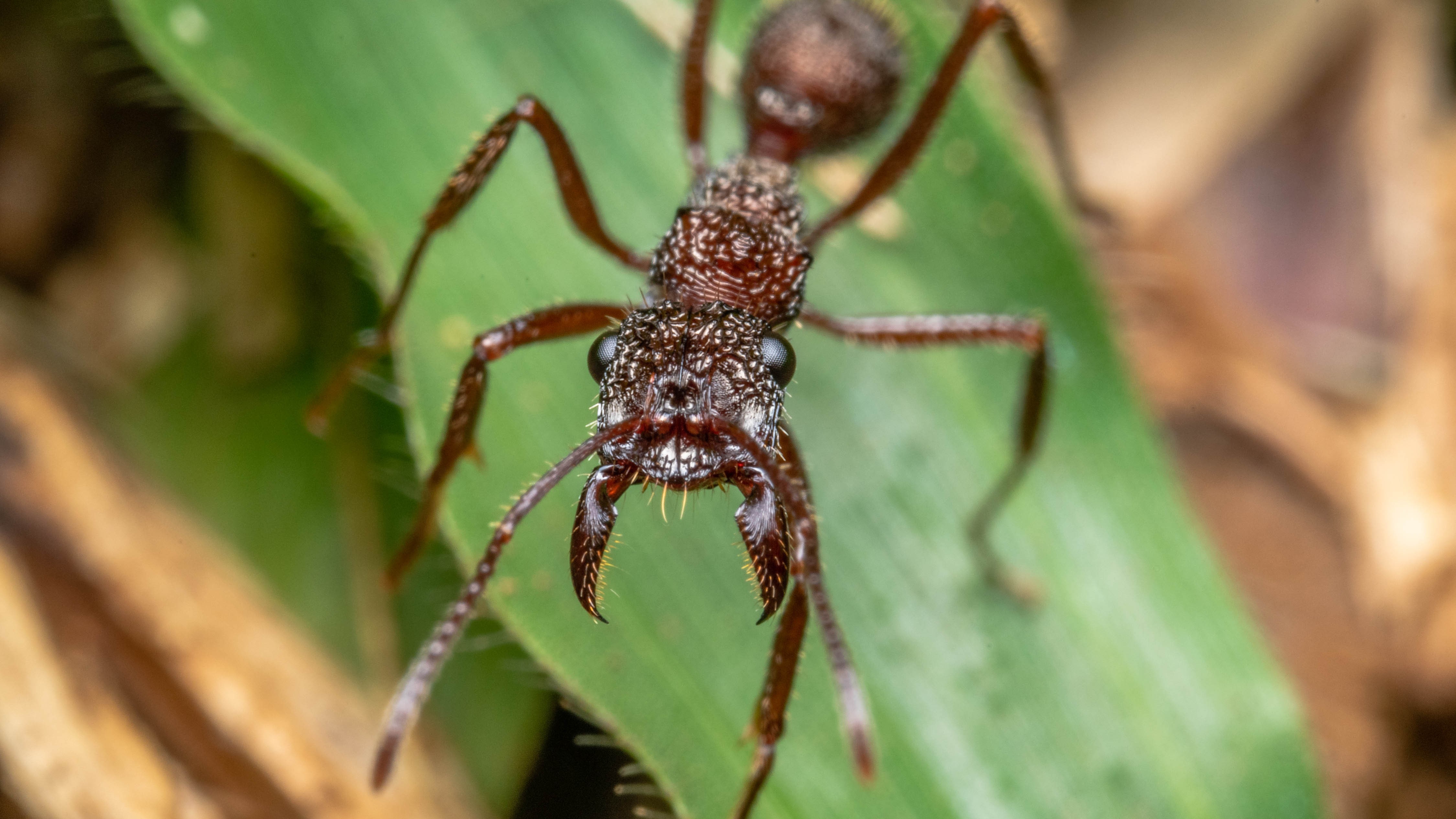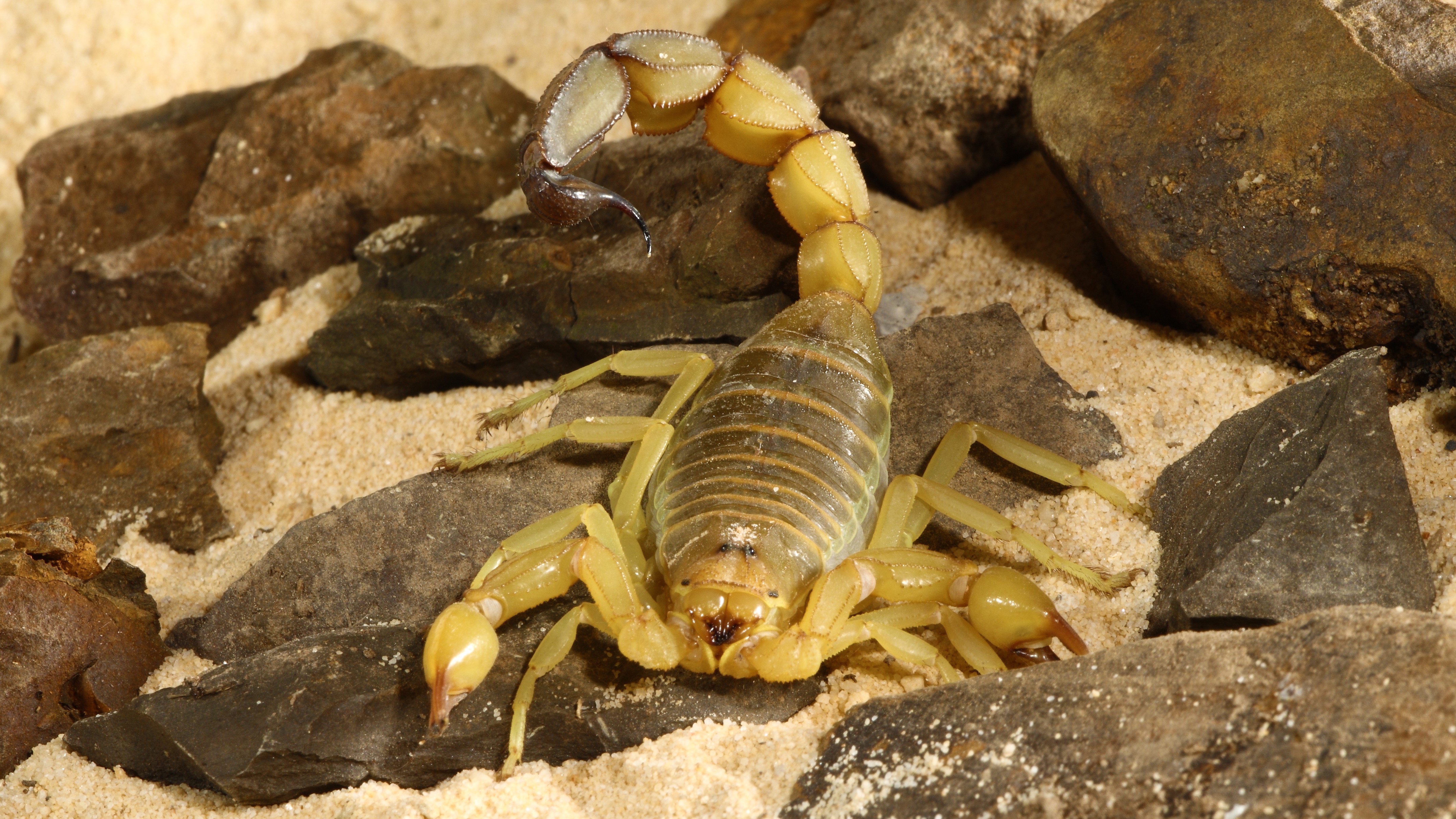

Ants that inflict the world's most painful stings do so by injecting venom that targets their victim's nerve cells, new research has found.
Australian greenhead ants (Rhytidoponera metallica) and bullet ants (Paraponera clavata), found in Central and South America, are not to be messed with. These insects' stings unleash a flood of toxins that cause trembling, uncontrollable and long-lasting pain in humans and other mammals.
In his 2016 book "The Sting of the Wild" (Johns Hopkins University Press), entomologist Justin O. Schmidt described being stung by a bullet ant as "pure, intense, brilliant pain. Like walking over flaming charcoal with a three-inch [8 centimeters] nail embedded in your heel."
Victims of these ants have also likened the pain to that of being shot, giving the insect its name.
"Bullet ant stings can be painful for up to 12 hours and it's a deep drilling pain you feel in your bones with sweating and goosebumps," Sam Robinson, a biopharmacologist at the University of Queensland's Institute for Molecular Bioscience who led the new research, said in a statement.
Related: Killer bees stung a man 250 times in swarm attack, but he survived. How?
Now, Robinson and his colleagues think they know how these ants pack such vicious stings.
In a study published May 23 in the journal Nature Communications, the scientists showed that the ant venom targets specific proteins in nerve cells that are involved in pain perception.
Greenhead and bullet ants produce toxins that bind to mammalian nerve cells when they sting. Researchers already knew bullet ants produce a substance targeting nerves called poneratoxin, but it remained unclear how this substance produced such intense and long-lasting pain.

To find out, the team investigated the toxin's effect on proteins embedded in the membrane of nerve cells called voltage-gated sodium channels, which serve a critical role in pain signaling.
These channels regulate how much sodium enters and exits cells, which determines the length and strength of pain signals, supporting neurological and muscle function in animals. Many venomous animals have evolved toxins that target sodium channels, including some scorpions, such as the yellow fat-tailed scorpion (Androctonus australis).
The researchers found that the venoms of greenhead and bullet ants, as well as another species called Tetramorium africanum, also target sodium channels. The ants' toxins unlock these channels and prevent them from shutting again, prolonging and intensifying the pain signal.
"We discovered that the ant toxins bind to the sodium channels and cause them to open more easily and stay open and active, which translates to a long-lasting pain signal," Robinson said in the statement.
While this mechanism could explain the excruciating pain caused by the ants' stings, there may be other factors at play that are yet to be discovered, the authors wrote in the study.
The findings could shed light on the molecular underpinnings of pain perception and pave the way for new treatments for pain. "We want to understand pain at a molecular level and toxins are fantastic tools to do this," Robinson said.







